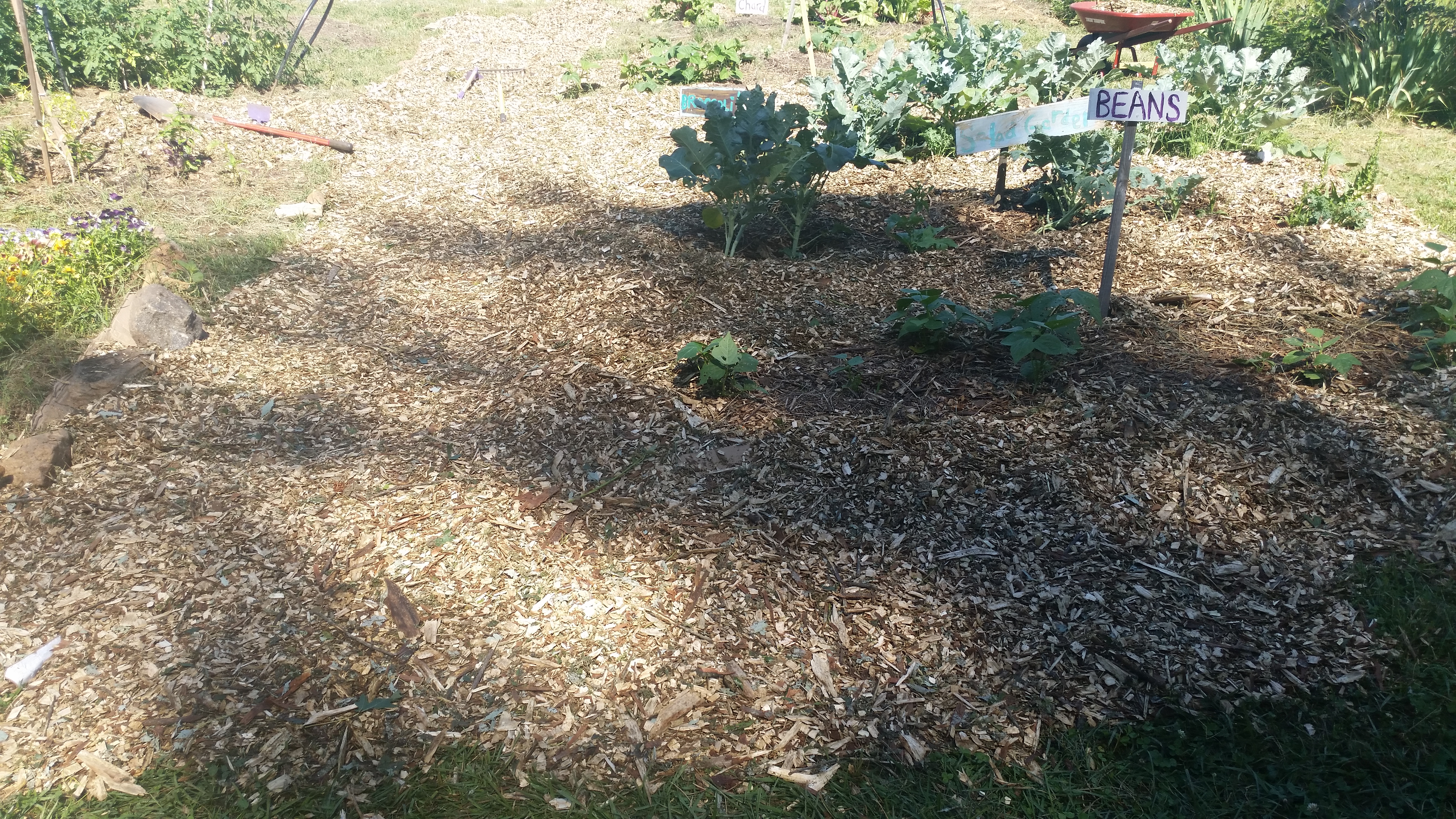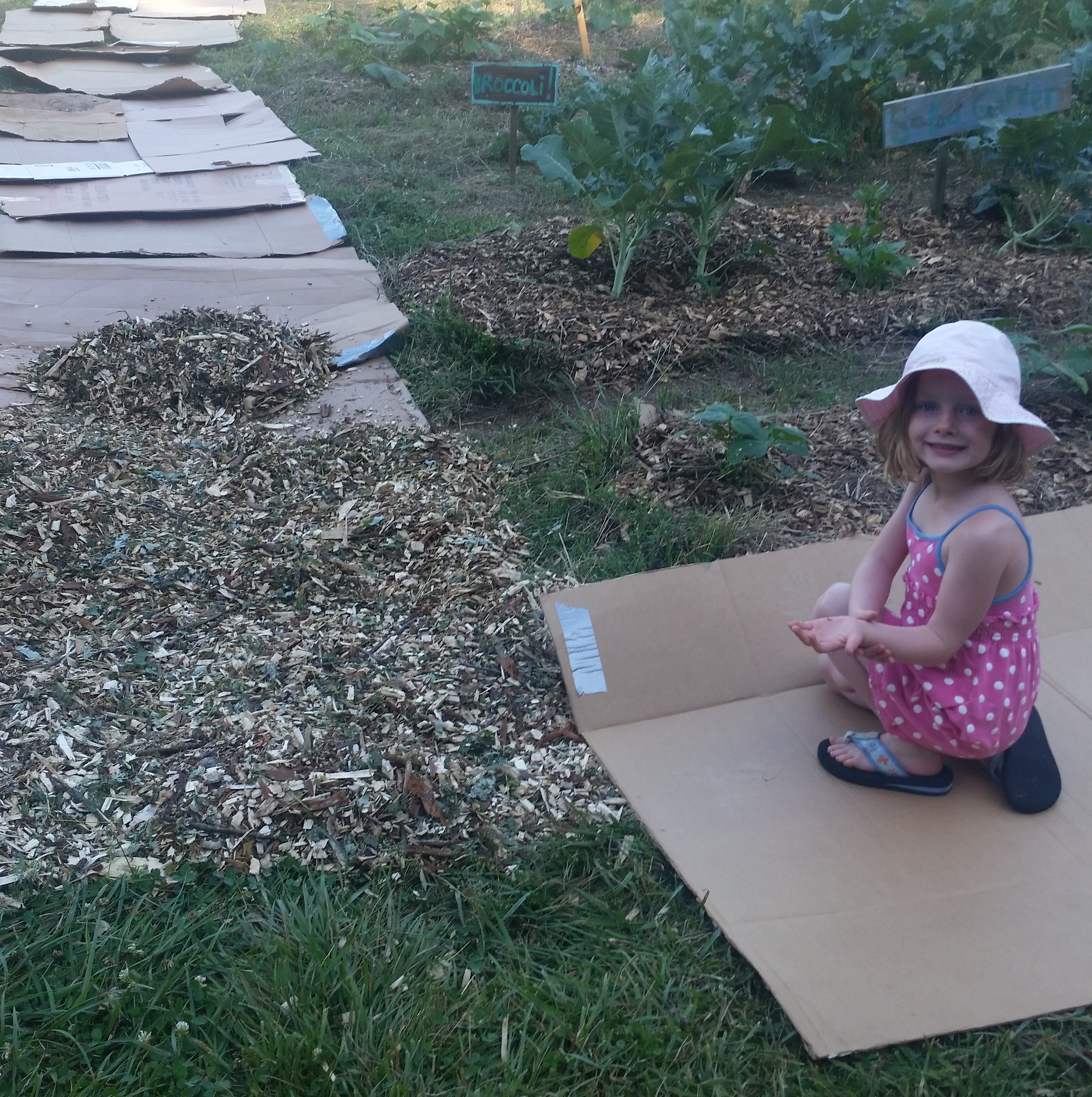One of my first jobs when we moved to Asheville in 2001 was working in the sales department of a major greenhouse company in the area. My main task was calling big-box home and garden stores every morning to make sure that the plant orders were correct. That typically took me all of an hour of my 8-hour day. Then I had to figure out what to do with the other seven hours. As long as I had plants on my computer screen, no one seemed to care what I was doing, so I spent the better part of a year learning and researching how to garden. (Suffice it to say, I did not win Employee of the Year at that job.)
It’s been a few years since I’ve had a serious veggie garden. Before kids, we had the majority of our half acre yard covered in edibles. After kids, we still have perennials like blueberries, raspberries, and rhubarb, but we have turned more of the yard over to play areas and landscape plants. We do a few herbs and annuals in the front yard, but I don’t have the time to devote to a large garden anymore. I sometimes miss a big, bountiful garden.
So it was great volunteering this week in our kids’ elementary school garden. When we got there on Monday, it certainly needed a lot of help! The grass paths were overgrown and invasive bermuda grass was taking over the veggie garden beds. I tugged on a few weeds and they snapped off in my hands, leaving the roots just under the surface ready to sprout and take over again in a few days. Weeding like this is a Sisyphean chore that makes gardening miserable in minutes. But there is a better way.
If someone were to ask me what my best garden tip is I would say “cardboard and mulch.” It is the easiest, no-weed, no chemical solution to beautiful paths and happy plants. Simply put some cardboard down, put some mulch on top, and that’s it. Want to start a new garden? Cardboard and mulch a section of your yard now and by fall, the cardboard will have mostly disintegrated. Even better, wait until spring. Then put your plants in, add more cardboard and mulch and you are done. No digging (other than a hole for each plant) or tilling necessary. It’s the way nature plants.
In the school garden, there was a small pile of old mulch available, but as we were working, I heard the rumble of a tree chipper nearby. I gathered up the kids and said, “c’mon, let’s go talk to those tree guys.” The Tree Ninjas (love that name!) were cutting up some trees near the school parking lot and I asked if they would dump the mulch for the garden. They told me they were cutting a big maple the next day and they’d be happy to dump a truckload of fresh mulch for the garden, saving them the trip and the fee to the stump yard. This is the way I usually get mulch for my yard for free!
Freshly chipped mulch is perfect for pathways, but is not a good choice for planting beds. As the wood decomposes, it steals nitrogen from the ground and from your plants, so you should only use decomposed mulch near plants you like. (But it’s great for ones you don’t like!) You could simply mulch without cardboard, but tough weeds will find a way through and you’ll have to add more mulch by the end of the season. I’m too lazy to do things twice, so I never mulch without cardboard. A good thick layer of mulch with cardboard should leave your beds virtually weed-free for the season.
My husband weed-eated (weed-ate?) the grass between the beds as low as possible yesterday and today, along with other volunteers, we put down sheets of cardboard in the pathways and dumped wheelbarrow after wheelbarrow full of mulch. We still have a way to go, but it looks so much better already!

So if anyone local reading this has some sheets of cardboard lying around or has access to some, please let me know! We quickly ran out of our stash and are only about a third of the way done.
I love the fact that our school prioritizes gardening and teaches kids how to grow food. I feel like that’s a lost art in many kids’ (and adults’) lives. And the best part? The food, of course!

